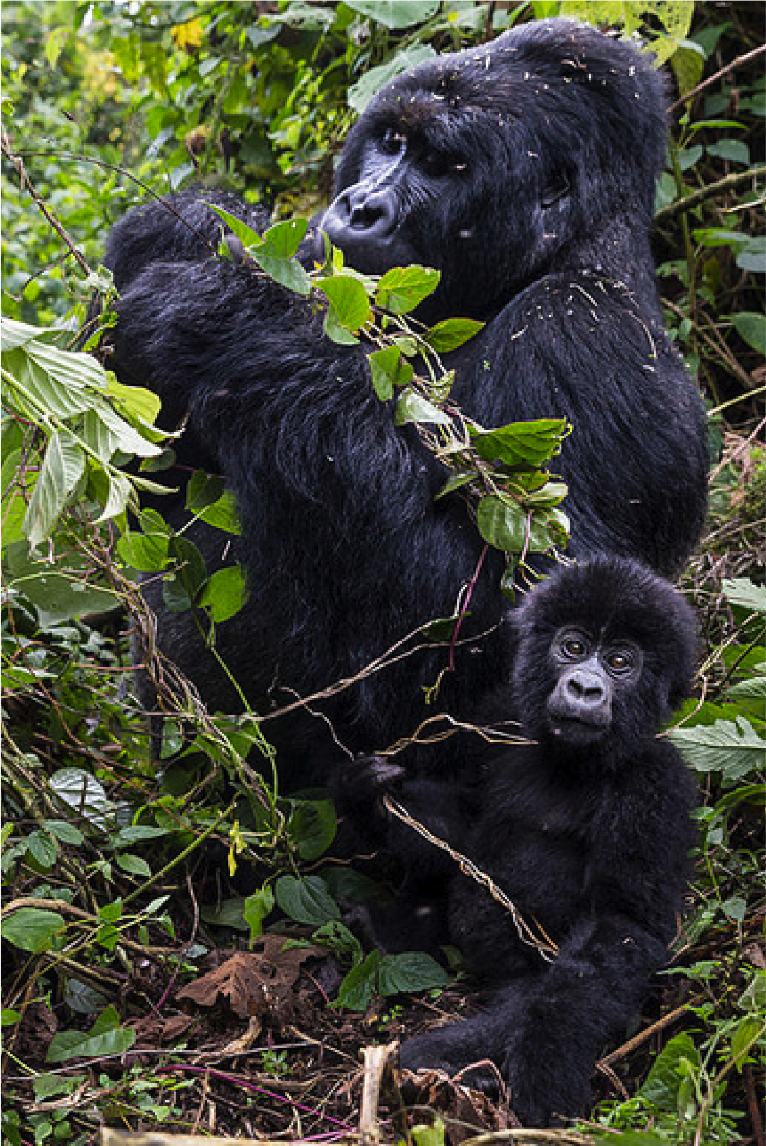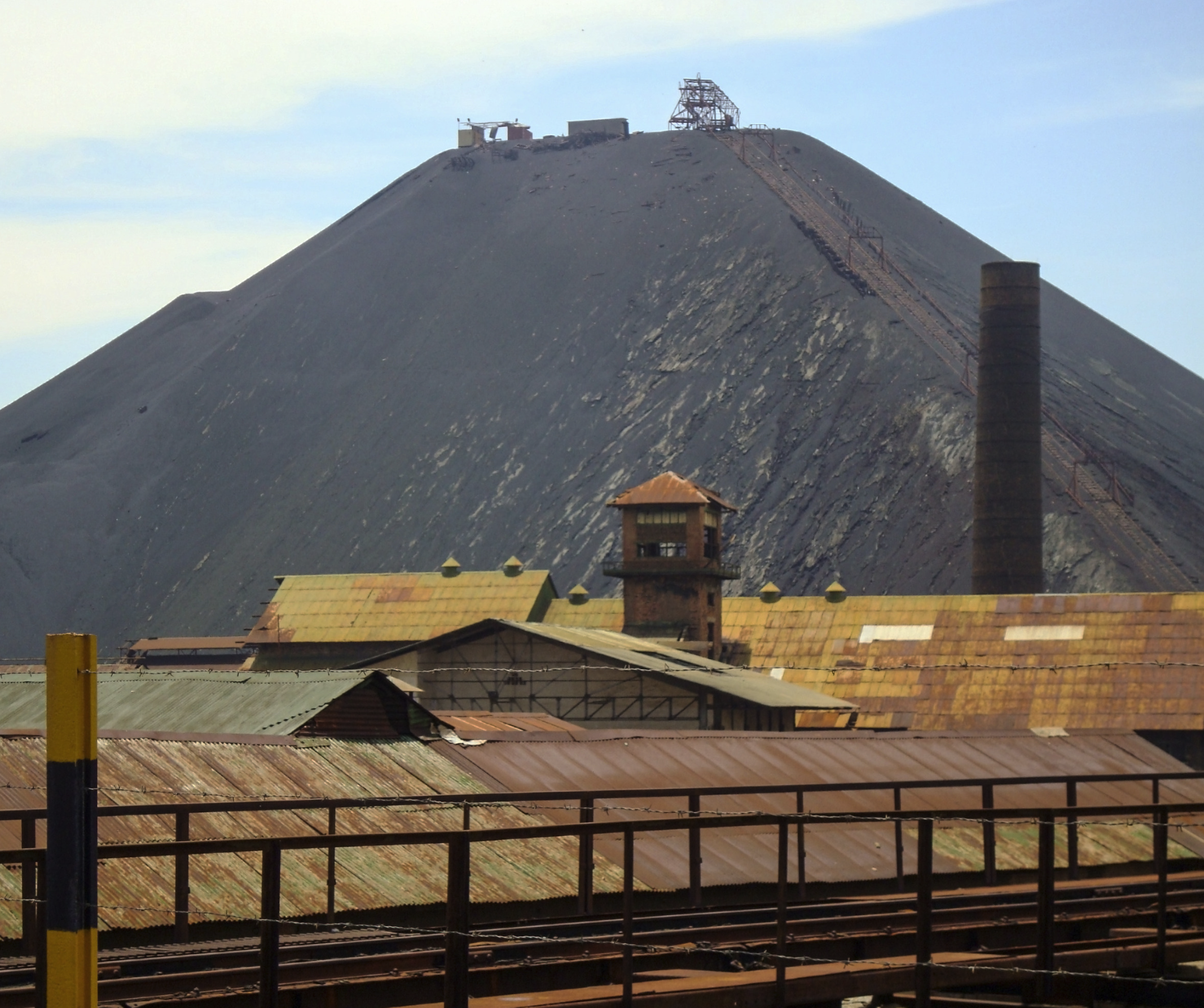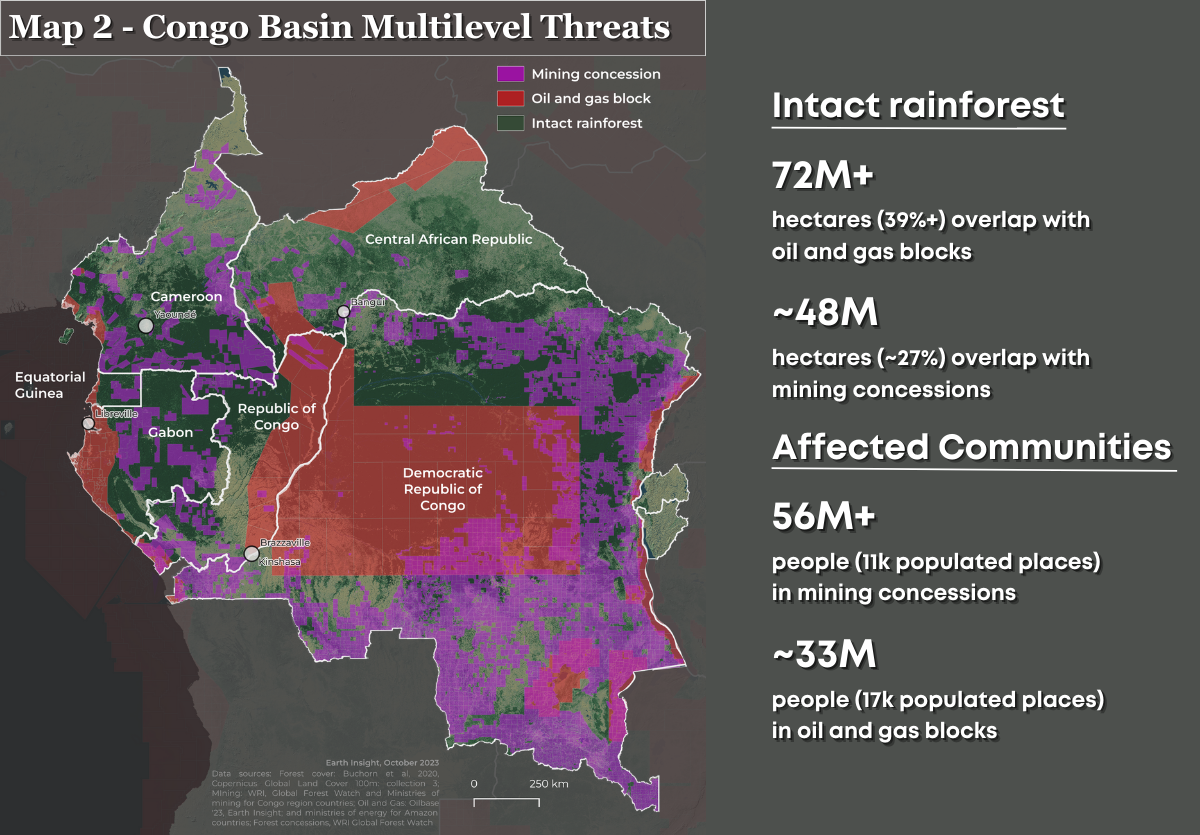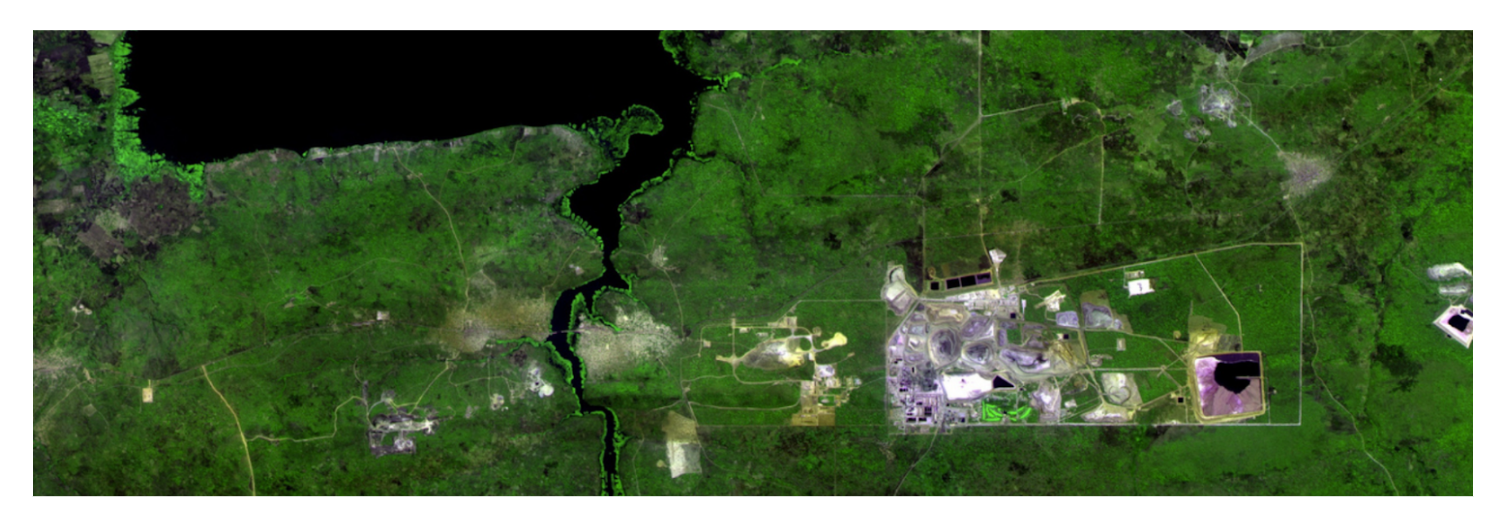.jpg?auto=compress%2Cformat)
Briefing Note: Three Basins Multi Threats to Congo
Introduction:
Fossil fuel and other industrial expansion in the Congo basin is an urgent threat that will harm climate stability, the integrity of one of the world’s most vital ecosystems, and the Indigenous and local communities who call this region home.
The vital forests and riverine ecosystems of the Congo basin are natural and cultural wonders that are critical for the maintenance of biodiversity and climate stability. Their preservation is essential for Indigenous and local communities who call them home and for the future of humanity. The first cut is the deepest, and the expansion of fossil fuel, mining, commercial logging or agriculture industries have the potential to initiate a cascade of deforestation and forest degradation that follow. Without a halt to extractive activities in intact areas – and adequate protection and enforcement, the remaining forests and the Indigenous and local communities that depend on them will continue to be severely impacted. Tropical forest basins risk systemic ecosystem breakdown, and as climates warm, feedback loops get triggered, and entire canopies die off. Amazonia is already in the midst of a tipping point crisis, and in the Congo Basin, the world’s second largest rainforest, a similar tipping point threshold near 25% deforestation and high degradation has also been modeled where it may no longer support rainforest ecosystems and services if that threshold is passed. It is projected that at least 27% of intact rainforests in the Congo Basin present in 2020 face dire, existential threats by 2050, if the rate of deforestation and forest degradation continues.

A mother and baby gorilla in the Democratic Republic of Congo's Virunga National Park, a protected World Heritage Site and most biodiverse park in Africa.
Image courtesy of Brent Stirton/Getty Images for WWF-Canon
Imminent threats: Key facts
Oil and Gas Expansion Threats In the Congo Basin:
Congolese country officials have been on a global roadshow trying to entice interest from oil companies in new developments in connection with the DRC’s massive oil and gas block auctions. The continued development of the EACOP pipeline will also make existing blocks more viable in the Eastern Congo - posing threats to Upemba and Virunga National Parks. New research indicates that:
- Over 72 million hectares, or more than 39% of the intact Tropical Moist Forests, now overlap with oil and gas production and exploration blocks.
- Over 150 distinct ethnic groups call the Congo Basin home, and nearly 33 million people in more than 17,000 populated places — or more than 20% of populated places (villages, communities, towns, etc.) in the Congo Basin — now live in oil and gas production and exploration blocks.

Copper mining slag dump in Congo
Image courtesy of Nada Bascarevic/Getty Images
DRC’s Massive Oil and Gas Auction – Priming a Carbon Bomb and Threatening Protected Areas
The Democratic Republic of the Congo (DRC) covers 60 percent of the Congo Basin, solidifying the country’s decision-making as central to the fate of the region. In July 2022, the DRC government moved a massive auction of 30 oil and gas blocks covering more than 11 million hectares of undisturbed tropical forest – an area nearly the size of England. Apart from climatic impacts, the infrastructure required to even explore for oil in this remote and highly sensitive ecosystem could alter drainage patterns, contaminate water and open up previously intact forest areas to further deforestation.
Three of these oil blocks (4, 4B and 22) overlap with the Cuvette Centrale peatlands, a globally vital carbon sink storing an estimated 29 billion tonnes –- or three years’ worth of global fossil fuel emissions. The peat in these three oil blocks alone store 1.67 billion tonnes of carbon – equivalent to the carbon emitted by burning 14.2 billion barrels of oil, according to the CongoPeat initiative. This is in addition to several oil blocks that have already been allocated over these peatlands in the neighboring Republic of Congo, including to oil majors Total and ENI.
Mining Expansion Threats In the Congo Basin:
Across the Congo basin mining expansion represents a significant threat to both ecosystems and local communities, given the associated deforestation and forest degradation and toxic impacts to communities and freshwater critical for survival. Mining expansion threats in the Congo basin are also looming:
- Nearly 48 million hectares, or nearly 27% of undisturbed Tropical Moist Forests, overlap with mining concessions.
- More than 11,000 populated places (villages, communities, towns, etc.) and 56 million people (inclusive of Indigenous and forest-based people) are located in mining concessions.

Congo Basin Multilevel Threats
A map by Earth Insight
Pervasive disappearance of tropical moist forest across the world
An analysis of Landsat data from 1990-2019 found 218.7 million hectares of tropical moist forest disappeared, with a further 106.5 million hectares in a degraded state. It estimated that at least 45.4% of recent degradation will likely lead to deforestation in less than ten years. Global tropical primary forest loss in 2022 totaled 4.1 million hectares, the equivalent of 11 football fields of forest disappearing every minute.
In the Amazon Basin, some 26% of its area show signs of deforestation and high degradation; 20% have been irreversibly converted; and 6% are highly degraded. It is projected that at least 27% of intact rainforests in the Congo Basin present in 2020 face existential threats by 2050, if the rate of deforestation and forest degradation continues. Southeast Asia has lost forest area larger than Germany – 376,000 km, or nearly one-sixth of its forests, with mounting threats from fossil fuel, mining, agribusiness, forestry and other industrial expansion.

An aerial view reveals the thick mistrising from the canopy after heavy rains on virgin rain forest in South Konawe, Southeast Sulawesi, Indonesia.
Photo courtesy of KhairulAbdi/CIFOR-ICRAF.
Protecting forests, advancing Indigenous and community rights, and averting tipping points:
Put simply, primary and intact forests must be preserved now before it is too late and the life-sustaining forest ecosystems of the three basins pass irreversible tipping points and further exacerbate the climate crisis.
The multitude of cascading industrial pressures and future threats explored in this briefing note reinforce the need for new, bold policies and financial mechanisms that are critical for global climate stability and to safeguard the forests of the three basins and the Indigenous and local communities who call them home. In a statement issued by a wide range of Indigenous, regional, and frontline organizations, heads of state from the three basins are being called upon to commit to the following:
- Scale up rights-based on legal protection, demarcation and recognition of forest communities’ lands and territories, as a prerequisite to more effective forest protection.
- Uphold communities’ right to fully and effectively participate in decision making on any developments planned in these areas; respecting Indigenous peoples' right to free, prior and informed consent, as well as securing the protection of those living in voluntary isolation.
- Empower and protect Indigenous peoples and other frontline environmental and human rights defenders by enhancing access to justice and providing strong legal protection for them.
- Halt and reverse loss and degradation of all natural ecosystems from large-scale agriculture, mining, extractives and other industries, such as through a global moratorium on industrial activities in primary forests as well as priority forests and through provision of legal protections for remaining natural forests, including in concession areas.
- Accelerate true, low-carbon development in tropical forest countries through a just energy transition, protecting natural forests and the rights and food sovereignty of local communities and Indigenous peoples.
- Adopt time-bound and measurable goals towards these objectives, for transparency and accountability.

Mutanda Mine in the Democratic Republic of Congo in CBERS4 PAN10 image. It is the largest cobalt mine in the world. Located in the Katanga Province of the Democratic Republic of Congo, near Kolwezi.
Image courtesy of Oton Barros (DSR/OBT/INPE) via Flickr (CC BY-SA 4.0 DEED).
Solutions
Regional and global awareness and momentum is building; and bold action is critical. A range of solutions and frameworks are referenced below that embody the need for both measured and accelerated action:
- A moratorium on all industrial activity in primary and priority forests until 2050 in order to safeguard critical ecosystems and allow time and space to develop appropriate financial system innovations, including adequate funding and payments for ecosystem services, debt relief, redirecting subsidies away from extractive industries, and to develop the legal mechanisms that support primary forest preservation and Indigenous co-management and restoration.
- Expansion of global Indigenous land tenure, access and resource rights, direct funding for co-management, and the requirement of Free, Prior, and Informed Consent (FPIC)
- Global financial architecture reforms that scale up financial resources towards climate action and the Sustainable Development Goals as uplifted by the Bridgetown Initiative
- New debt for Climate and Biodiversity commitments from International Financial Institutions, such as the IMF, large debt-holding nations like China, and other debt holders in the private sector
- New frameworks for action including the 10-Point Plan for Financing Biodiversity
- Increased country-level commitments to the principles of the Beyond Oil and Gas Alliance and widespread commitments to the Fossil Fuel Non-Proliferation Treaty
- Unlocking the vast potential in renewables and scaling up direct support to forest communities and other frontline forest defenders.
Additional Data
Several recent reports underscore the global need to end oil and gas expansion – especially in these and other critical forest basins and ecosystems:
- Three Basins Threat Report: Fossil Fuel, Mining, and Industrial Expansion Threats to Forests and Communities
- Crisis Point: Oil and Gas Expansion Threats to Amazon and Congo Basin Tropical Forests and Communities
- Congo in the Crosshairs: New Oil and Gas Expansion Threats to Climate, Forests, and Communities
- Fuelling Failure: How coal, oil and gas sabotage all seventeen Sustainable Development Goals
- BankTrack’s Dodgy Deals can be found here. In particular see profiles on the DRC oil & gas auction; oil and gas exploration in Virunga National Park; and the related East African Crude Oil Pipeline (EACOP).

